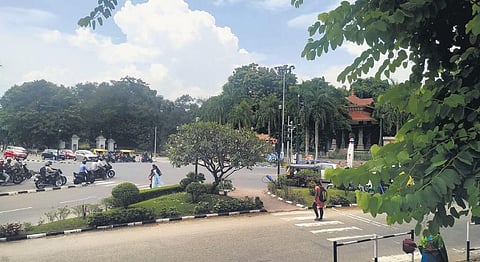Kowdiar: Royal locus without a royal origin
THIRUVANANTHAPURAM: The peaceful early mornings and the busy evenings in this part of the city witnesses local residents flexing their muscles and jogging. Despite the sound of the screeching wheels and loud honks, Kowdiar somehow gives out a serene feeling to the pedestrians. The sustained royal presence in the location adds to its prominence. But the history of this place has zero royal link.
The origin of its name dates back to 2,000 years, coming from the ‘Ainthinai’ culture of the ‘Sangam’ period, where land was believed to be divided into five regions -‘Kuram’ (hill), ‘Paara’ (desert), ‘Mulla’ (forest and grasslands), ‘Neythal’ (ponds and coastal areas) and ‘Marutham’ (areas suitable for farming).
Kowdiar was a part of ‘Kuram’, the hilly areas. The people who lived there were known as ‘Kuravar’. The Kuravas created thickets to form ‘Kaavu’ to worship their god called ‘Cheyon’ or ‘Murugan’. The leader alone had the authority to do religious rituals in Kaavu, who was called as ‘kaavinte adiyaar’. The region, thus was called ‘Kaavadiyaar’, and was then abridged to Kowdiar, its current name. At one point, it was known as ‘Kowdiar Kunnu’.
“Kuravankonam, the place closest to Kowdiar is the biggest evidence that the Kurava clan resided there. It is quite evident from the name itself,” stated historian Vellanad Ramachandran. Centuries later, during the reign of King Sree Moolam Thirunal, the famous Kowdiar palace was constructed and thereafter used as the headquarters by the then King Chithira Thirunal.
Kowdiar is now one of the most popular locations in the capital city. The Vivekananda Park, expensive residential areas, the skating ground in front of the palace makes the locality a favourite place among the people. Kowdiar is the starting point of the Raja Veedhi (Royal Path) that extends till East Fort.

